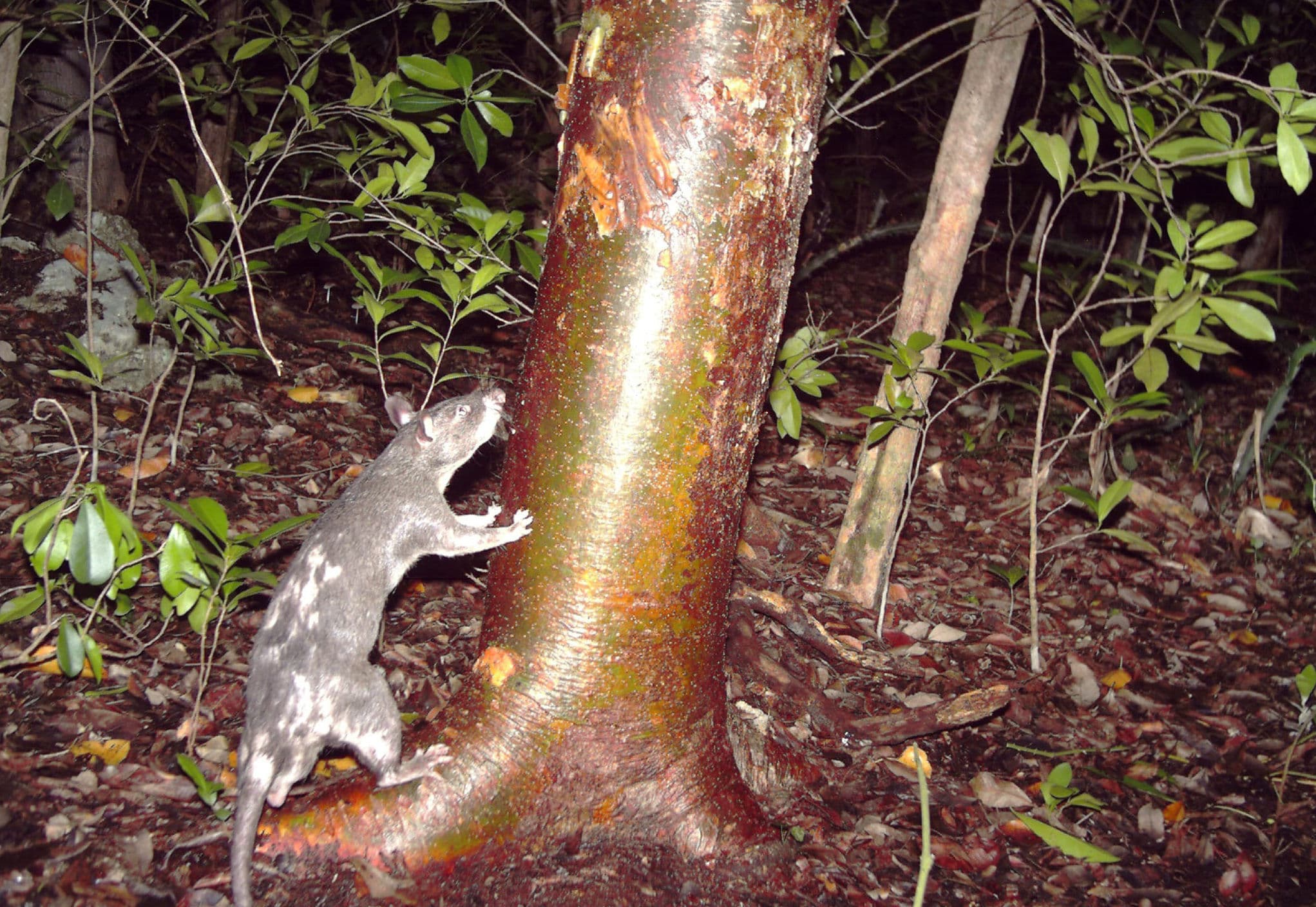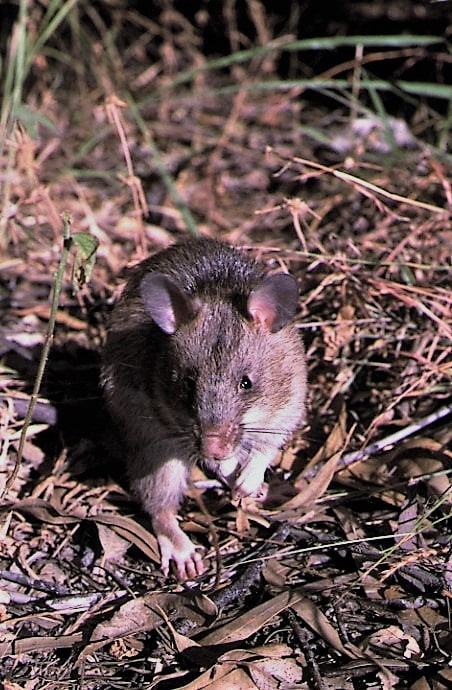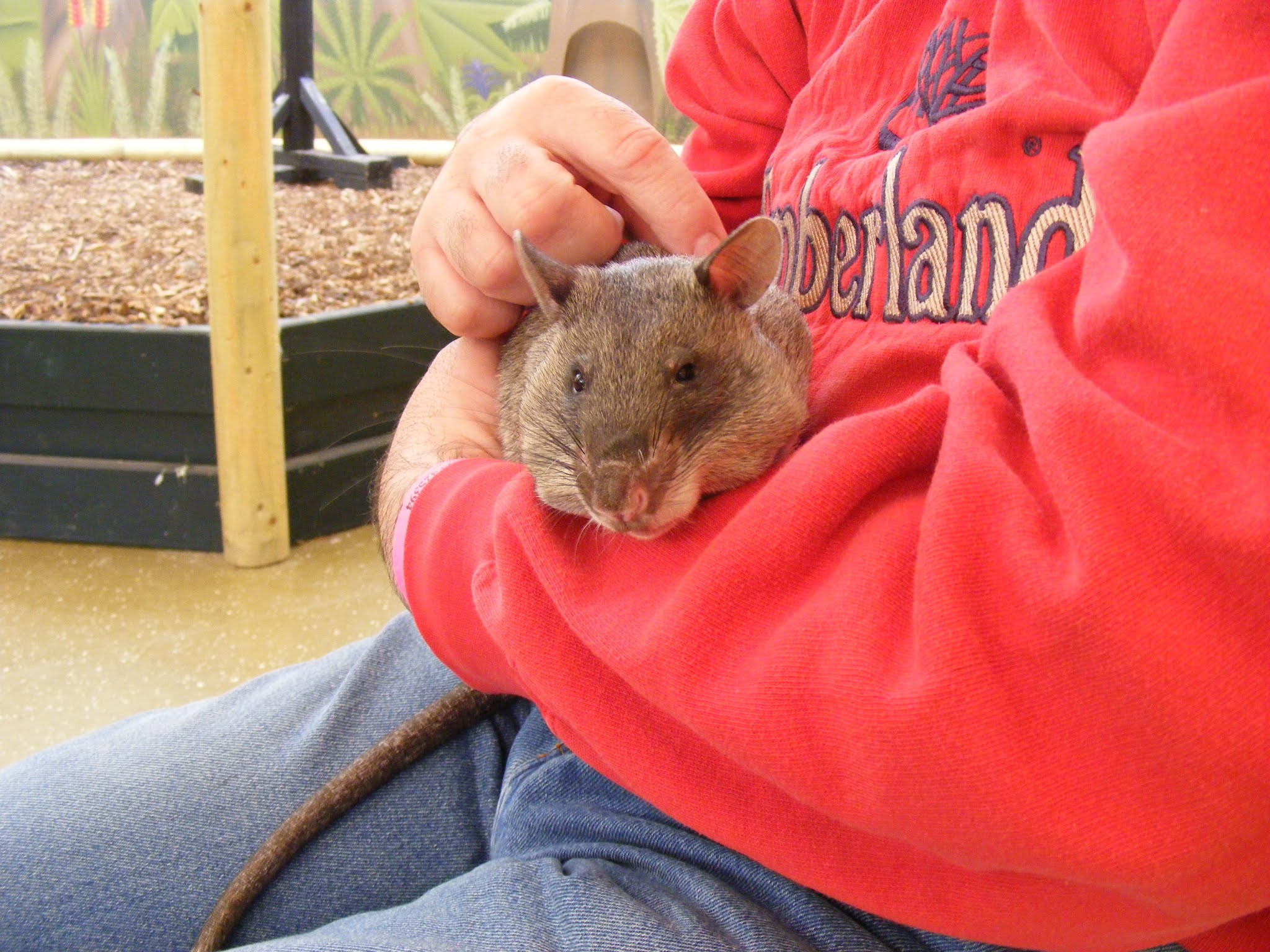 |
| About The Gambian Pouched Rat, A Mine Cleaner From Africa (source) |
About The Gambian Pouched Rat, A Mine Cleaner From Africa. The Gambian Pouched Rat or in scientific language Cricetomys gambianus is the name for a type of rat whose original habitat comes from Africa, to be precise from the southern Sahara Desert to South African countries.
About The Gambian Pouched Rat, A Mine Cleaner From Africa
The Gambian name for this rat comes from the name of the Gambia River, a large river located in West Africa. Gambian Pouched Rats are classified as large rats because these animals can grow up to 90 centimeters long including the mouse tail.
In general, the appearance of Gambian Pouched Rats is not much different from the rats we usually encounter at home. The head is tapered with a pair of round ears.
Its body is elongated and covered with hair or hair that is predominantly gray in color. The tail is long with a tapered tip. The peculiarity of the Gambian Pouched Rat that makes it easy to distinguish from other rat species is the ring-shaped black circle around its eyes.
 |
| About The Gambian Pouched Rat, A Mine Cleaner From Africa |
Gambian Pouched Rats are also known as mice with pockets because they have pockets on their bodies. However, unlike kangaroos, which have pockets in their stomachs, Gambian Pouched Rats have pockets on the cheeks like a hamster.
With these cheek pouches, Gambian Pouched Rats can store large quantities of food and carry it elsewhere to eat at a later time. With these cheek pouches, Gambian Pouched Rats can store food with a maximum volume of 100 milliliters.
Gambian Pouched Rats can live in almost any habitat with a maximum altitude of 3,500 meters. Starting from the desert, forests, mountains, to human settlements.
Interestingly, although Gambian Pouched Rats can live in areas as dry as deserts, at first they are not resistant to hot weather.
To outsmart this, Gambian Pouched Rats also have a nocturnal lifestyle, aka active at night. Meanwhile, during the day, Gambian Pouched Rats live in sheltered places such as in hollow logs or in earthen basins.
Gambian Pouched Rats are omnivores, aka eaters of everything. The diet consists of fruits, tubers, vegetables, nuts, to snails and insects. When eating the fruit, Gambian Pouched Rats help inadvertently disperse seeds by removing grain-laden dirt in the places they pass..
Gambian Pouched Rats are versatile animals because they can swim and climb high places to get to where they want to be.
The Gambian Pouched Rat is a solitary animal, aka a loner. They have a fairly aggressive behavior and will attack anyone who comes near their nests.
 |
| About The Gambian Pouched Rat, A Mine Cleaner From Africa |
However, in certain cases, such as when the weather is cold, the Gambian Pouched Rats will sleep in groups so they can warm up to each other. Female Gambian Pouched Rats also have the habit of forming groups of female rats and their chicks.
The Gambian Pouched Rat breeding season generally occurs in the local summer time. If the female does not want to mate, the female will repel the male by biting his tail or back.
However, if the female accepts the male's invitation, the two mice will mate. After mating, female rats will undergo a gestation period of one month. The number of babies held by female rats ranged from one to five.
The Gambian Pouched Rat baby was born without hair with his eyes and ears still closed. New hair will grow and new ears will open at the age of two weeks, while new eyes will open at the age of three weeks.
Big Rodents Videos
Only females are involved in childcare activities, whereas males will ignore or even kill babies to eat them. Gambian Pouched Rat babies will live from their mother's milk until four weeks of age and must live independently by the age of one month.
Then at the age of six months, Gambian Pouched Rats will experience sexual maturity. A Gambian Pouched Rat can live up to eight years in capture.
Rats that are often hated but are also often in demand
 |
| About The Gambian Pouched Rat, A Mine Cleaner From Africa (source) |











0 comments